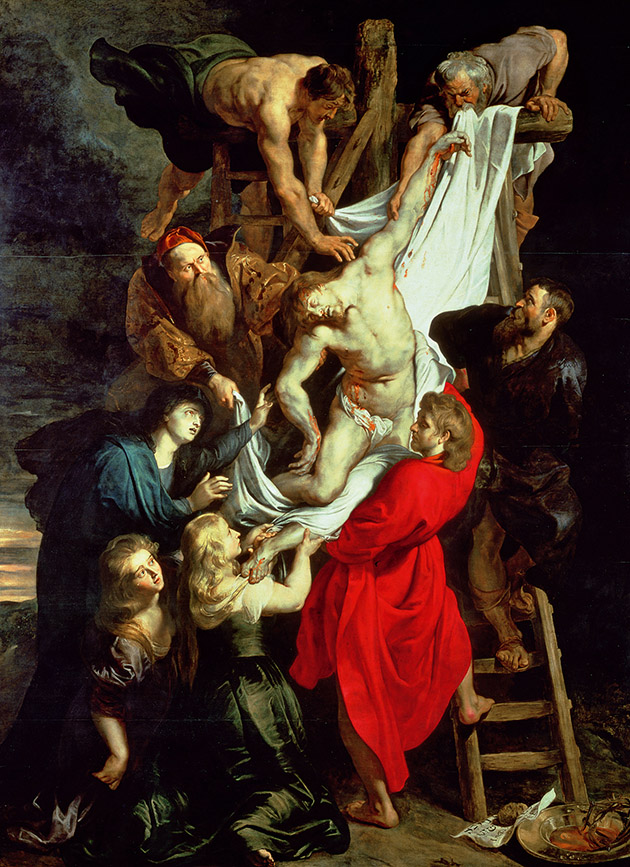My favourite painting: Charles H. Cecil
'It embodies what oil painting can attain.'


The Descent from the Cross, 1614, by Sir Peter Paul Rubens (1577–1640), 13ft 9½in by 10ft 2in, Antwerp Cathedral, Belgium
Charles H. Cecil says:
I first set eyes on Rubens’s Descent from the Cross at the age of 21. I was overwhelmed by its immense scale, extraordinary design, pathos of gesture and expression. And its colour—the pale Christ juxtaposed to the stark white of the winding sheet; the unforgettable red of St John’s robe. I was drawn into a mythic realm, both timeless and actual.
The Descent from the Cross embodies what oil painting can attain and it inevitably calls into question the art of our own age.
Charles H. Cecil is an American painter who has been teaching at his atelier in Florence since 1983
John McEwen comments on The Descent from the Cross:
In 1600, aged 23, Rubens set out for Italy. He stayed eight years, spending time in all the great art centres, and became Court Painter to Vincenzo Gonzaga, Duke of Mantua, at whose expense he visited Madrid, where he studied the Titians and Raphaels in the Spanish royal collection.
Exquisite houses, the beauty of Nature, and how to get the most from your life, straight to your inbox.
In 1608, he heard his mother was seriously ill in Antwerp and returned, too late. He intended to go back to Italy, but settled in Antwerp when he accepted the offer to be Court Painter to the Spanish Governors of the Netherlands, a post he held until his death.
He built himself an Italianate palace, now his museum, and proceeded to become the unrivalled master of Northern Baroque. His chief assistants Van Dyck, Jordaens and Snyders were exceptional, but, usually, he did the final work on a picture to ensure the unity of his preparatory oil sketch.
Rubens found his most sympathetic interpreter in the 19th-century painter and writer Eugene Fromentin. No one should tour the masters of Dutch and Flemish painting in the Low Countries without a copy of Fromentin’s The Masters of Past Time. One of the miracles is to see so many of the pictures in exactly the same positions he saw them, despite the subsequent ravages of the World Wars.
Fromentin considered Rubens’s two great paintings for Antwerp Cathedral his first mature works. He describes The Descent: ‘The scene is powerful and grave… it is serious, and makes one feel serious too… We perceive that this is a noble piece of torment. Everything is restrained, concise, laconic, as if it were a page of Holy Scripture.
Country Life is unlike any other magazine: the only glossy weekly on the newsstand and the only magazine that has been guest-edited by His Majesty The King not once, but twice. It is a celebration of modern rural life and all its diverse joys and pleasures — that was first published in Queen Victoria's Diamond Jubilee year. Our eclectic mixture of witty and informative content — from the most up-to-date property news and commentary and a coveted glimpse inside some of the UK's best houses and gardens, to gardening, the arts and interior design, written by experts in their field — still cannot be found in print or online, anywhere else.
